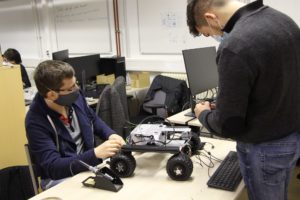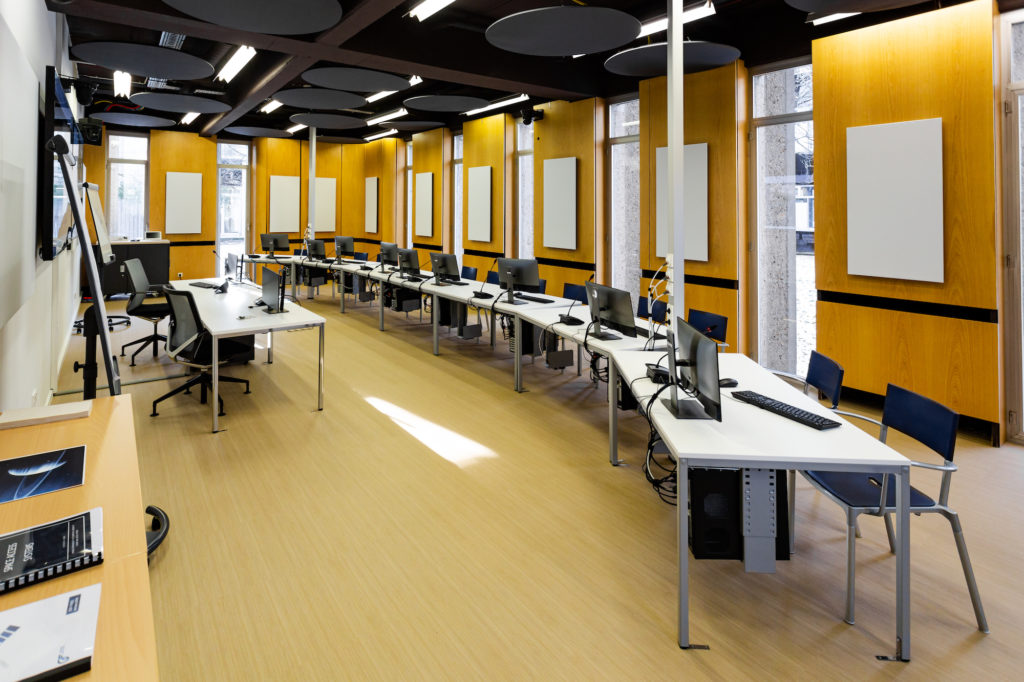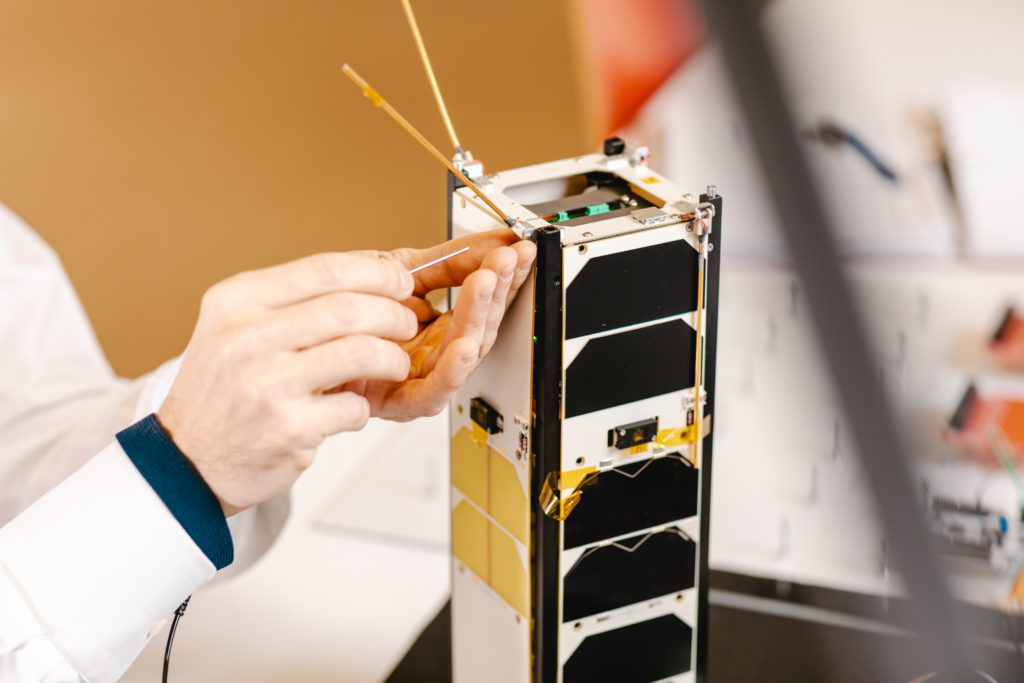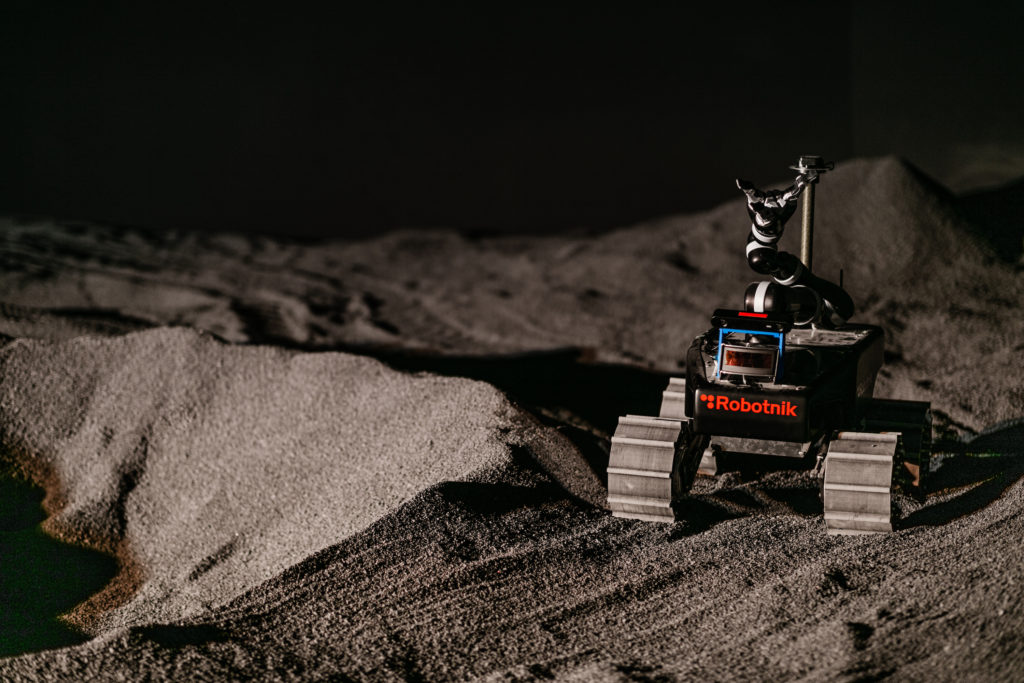Since the foundation of SnT, our researchers have been working hand in hand with the satellite industry and public space sector on innovative research projects. With NewSpace industry opportunities and partnerships emerging across the heart of Europe, our centre has expanded and formalised these space competencies into an entirely new master’s degree programme. The Interdisciplinary Space Master (ISM) was developed in partnership with the Luxembourg Space Agency and co-hosted by SnT, alongside the Faculty of Science, Technology and Medicine. With Luxembourg’s space sector already accounting for 2% of the country’s GDP, and opportunities growing every day, the ISM aims to generate a talent pool of professionals able to answer the needs of the sophisticated and innovative companies who choose the Grand Duchy as their base. It is an education that works hand in hand with the nation’s economic strategy for space.

In 2020, three new labs constructed for the ISM at SnT’s facilities on Campus Kirchberg welcomed the first group of students (the 2019 cohort) through their doors. The programme is designed to give students not only the scientific competencies they need to succeed, but also the business acumen necessary to ensure that their success is sustainable. To attain these objectives, the ISM uses a project-based learning approach, of which the labs are a key part.
"Our Facility can be used in a vast range of design applications, from designing a single satellite to an entire lunar establishment akin to NASA’s Artemis program.”
Dr. Loveneesh Rana, SnT Tweet

One way that the ISM teaches students to pursue scientific excellence with business smarts is through its Concurrent Design Facility (CDF), which was officially unveiled in 2020. At the CDF, students learn how to facilitate and participate in concurrent engineering, a state-of-the-art design methodology that encourages engineers to work in parallel on the same project, rather than sequentially. This approach greatly improves the quality of the final result, in addition to keeping costs down and schedules on time.
“I envision the CDF like a sophisticated ‘Swiss Army knife’ of space system design. As the knife can become a different tool for various situations, our facility’s configuration can also be changed depending on the desired application — be it designing a spacecraft, planning the architecture of a space system, conducting feasibility studies, or strategic forecasting, to name but a few” says Dr. Loveneesh Rana, Head of the Concurrent Design Facility (CDF). “Our Facility can be used in a vast range of design applications, from designing a single satellite to an entire lunar establishment akin to NASA’s Artemis program,” he adds.
"Within three semesters these students gained a comprehensive understanding of satellite missions with a focus on the CubeSat technology."
Dr. Jan Thoemel, SnT Tweet
To be truly agile in today’s budding space industries, you need more than just concurrent design practices. Another key component of the new space race is innovative hardware: components with fast turnaround times and low costs, that allow businesses to experiment and pivot. An example of this is a CubeSat, a small satellite constituted by one to six units measuring 10cm3 and weighing no more than 1.22 kg. These units often make use of off-the-shelf commercial electronics and hardware, making CubeSats inexpensive and flexible, and giving businesses the opportunity to innovate according to agile design principles — an approach that is inconceivable in traditional satellite systems.
At SnT, students have the opportunity to get to know this crucial NewSpace technology at the CubeSat Lab. “Once the students complete this laboratory, they will know what a satellite mission is all about. They will know how to design a satellite using modularity, a type of high-level design called system engineering,” says Dr. Jan Thoemel, who leads the lab. In 2019, the first cohort of students participated in CubeSat projects at the newly opened CubeSat Lab. “Within three semesters these students gained a comprehensive understanding of satellite missions with a focus on the CubeSat technology, “ says Thoemel. In fact, in less than two semesters, the students successfully conceived, designed and developed GOLDCREST, a CubeSat project to measure soil moisture.

Space innovation at SnT isn’t limited to what is in orbit — our students also have the opportunity to explore the challenges and rewards of the new lunar frontier at our recently constructed LunaLab. This unique facility mimics the conditions that rovers and their relatives must contend with when operating on the surface of Earth’s only natural satellite.
In 2020, the LunaLab hosted its first-ever Luna challenge as a part of the global Act in Space Hackathon. The challenge, headed by Prof. Miguel Olivares Mendez, Head of the LunaLab, asked teams to tackle the real-world problem of designing a lunar rover to find ice on the moon (a critical resource to enable sustained space operations). “We wanted the young people who participated in our challenge to get a sense of the entire development cycle of a lunar rover,” said Prof. Olivares-Mendez.
This is an opportunity that will contribute to shaping the future of space exploration, and part of the study programme of the Interdisciplinary Space Master.
